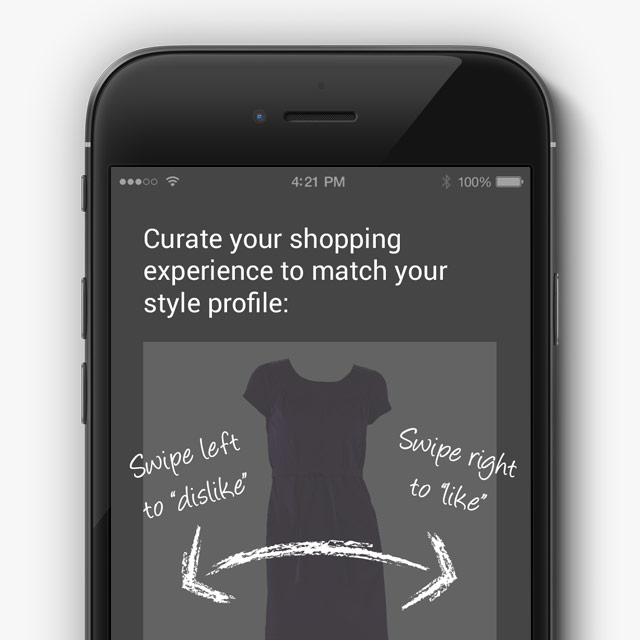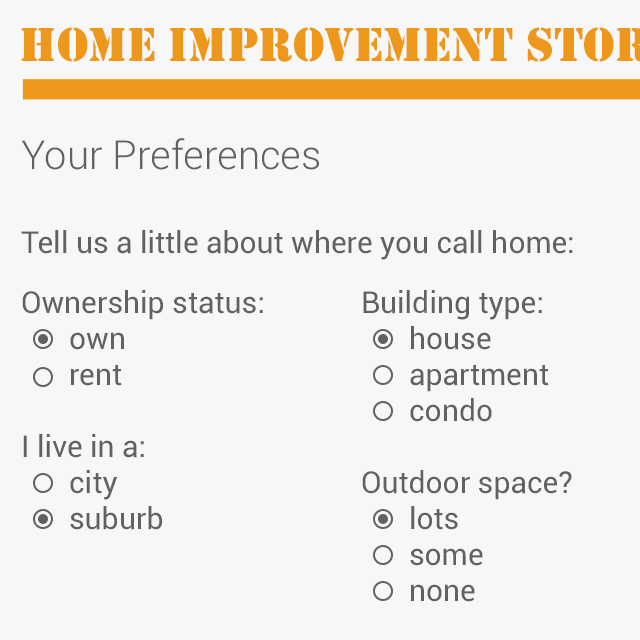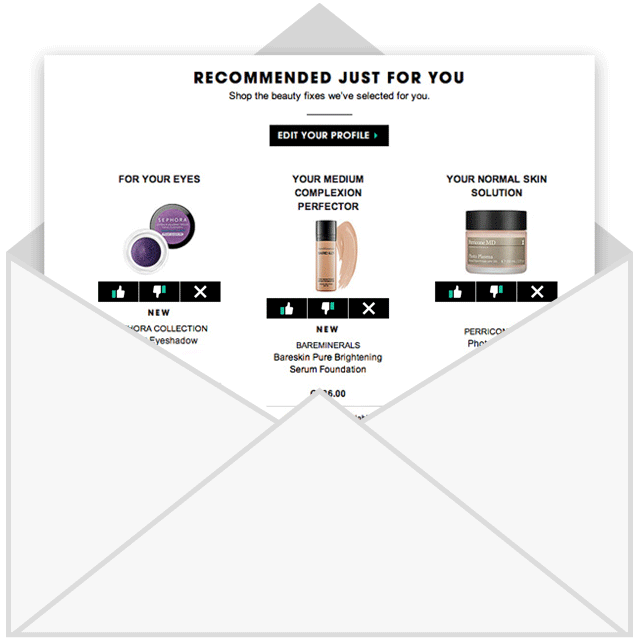Take a moment and think about how you interact with your mobile device, how do you research or make purchases on your mobile phone? You’ll quickly realize that your path to purchase most often begins with a keyword search, which often is vastly different than how you navigate a dot-com site or your local brick and mortar retailer. Infact, 56% of all retail searches occur on mobile devices. Mobile access has changed the way we as consumers interact with the world and it has significantly changed the path to purchase. Mobile was once used for showrooming purposes, sending retailers into a tailspin about how to ensure shoppers didn’t browse in store and convert elsewhere. Today, our challenge is different, mobile devices and behaviors have evolved, they’re more intelligent and more capable to handle a complete shopping journey. While showrooming and browsing behaviors still occur, the completion of the purchase on the mobile device is accounting for more and more of a retailer’s revenue. According to Internet Retailer, mobile commerce is growing at 3 times the rate of US ecommerce overall, accounting for more than $104 billion in 2015.
Today’s challenge is focused on how retailers ensure that customers are finding what they’re looking for on mobile devices so that they ultimately convert. This begs the question, how well is your site search performing? Are your customers finding what they seek? Is your site search delivering a customer centric and mobile considerate experience? What metrics are you using to determine it’s success or failure?
The traditional and dated way of measuring site performance (and commerce search within) by Revenue Per Session (RPS) and conversion were valid when ecommerce was simply just a dot-com site, which is not the case for today’s world. Today, it is essential to measure the performance of each individual feature that leads to a purchase/conversion. In the case of site search, success is defined by the relevance of the results delivered by a search engine to an individual user.
Search is innately unique in the respect that it is the single place in digital shopping journeys where users communicate with technology in their own words and expect a comprehensive response or set of responses. By default, search demands 1:1 communication, and is one of the most impactful places to influence and enhance the customer experience. Search is often a retailer’s first impression, especially on mobile, it is a critical opportunity to succeed by providing relevant and individualized results. Commerce Search accelerates product discovery and drives consumer conversion by delivering the most relevant results for each unique search query. The accuracy of the responses delivered by search is measured by what is known as “Findability”.
Findability a term first coined by Professor Michael Hendron, whose research indicates that nearly a third of e-commerce shoppers use site search, and 90% of buyers will probably use it. Yet these same sought after buyers only find what they seek in half of all site searches.
Since when did the retail industry accept a success rate of just 50%?
Given that search is a feature most often chosen by a determined and informed consumer who knows exactly what he/she wants, especially in ecommerce, it is essential to measure how successful the actual search experience is for that individual. This is why Findability must be a focal point of consideration when analyzing the performance of site search. Findability tells merchants whether consumers find what they are looking for and if they are ultimately pleased with those items. The conversion of these shoppers can only come if they have in fact located the items they desire. It is a cause and effect relationship, and a relationship that if treated right will thrive. When consumers trust that their searches will yield results they’re satisfied with, their search frequency and dependency simultaneously increases.
Are you measuring your site search properly? Are your customers finding what they’re looking for? Perhaps the metrics you’re currently using to determine performance are not providing you with the whole story. To get deeper insight into how to enhance your site search performance and learn more about Findability please visit https://richrelevance.com/relevance-cloud/find/ to stay in the know about our newest product launch Find™, the next generation of personalized search for an omnichannel world.
Can a better user experience disrupt an industry? I don’t mean digital-only experiences like Angry Birds or FarmVille, but industries with physical assets and high marginal costs like taxis and 200,000 square foot stores. Uber and Amazon are proving that user experience disrupts. Amazon accounted for 24% of all U.S. retail growth last year and taxi license values have dropped 28% since Uber launched. Increasingly, our clients are telling us that their customers compare their user experience’s to that of Uber and Amazon — not Kohl’s to Target, Nordstrom to Saks, Williams Sonoma to Crate & Barrel, or Sam’s Club to Costco. Today, your competition, especially in user experience, has no bounds. Vertical silos no longer apply, you’re competing against whomever has created the most innovative and user-centric experience.
Google predicted this six years ago and has consistently repeated the warning ever since, however, few retailers responded. It’s difficult to head this kind of warning when ecommerce is growing at 30% year-over-year and there’s no pain in sight, but this year the pain arrived. So what can retailers do?
One of our luxe department store clients conducted a study a year ago to determine what their clients wanted in their user experience. They were considering everything from pop-up stores, in-home trunk shows to tablet apps. The response was oddly simple and overwhelmingly clear: whatever you do make sure it works on the shopper’s 5 inch smartphone screen and equip in-store sales associate’s with tablets rich with useful information. They were a bit surprised. Women standing in a gorgeous multi-story luxury department store would want rich, personalized information on their 5” screen? Overwhelmingly, yes. And when she was talking face-to-face with a high-paid, well-trained sales associate she wanted the associate to have the same personalized information so they could share it on an 8” screen? Yes again!
Like most mega-trends, it’s not surprising in retrospect. After all this is the generation that publishes their lives across social media, invented the selfie, and stares at their beloved 5” screen every chance they get. Although we’ve heard it time and time again, we’ve now been told that mobile dominates, plain and simple.
So with mobile applications in mind, here are the low-hanging fruit we’re seeing our retail clients go after:
Offline sales: Add store and contact center sales transactions to your web and mobile app customer profiles. Transactional data is relatively small. It only takes four minutes to upload Cyber Monday sales for a huge retailer such as Macy’s.
In-store mode for customers’ mobile app: Stores are information rich environments, but so are smartphone apps, so get them working together. JCPenney, L.L.Bean, Patagonia and many others are doing just this. Start with something as simple as letting customers scan an item’s barcode and retrieve real time prices, inventory, accessory recommendations, other product recommendations and even editorial content. Standing in front of a 4 foot hunk of plastic is useful, but so is watching an awesome video on how to use it; feeling the fabric of a dress is experiential, but so is seeing how it was fitted and flowed on the runway. If your customers like scanning items then add more proactive service features such as passively detecting location with beacons and then streaming personalized recommendations and content as they move about the store.
Sales associate app: Monsoon was our first client to add personalization to sales associate tablets. After extensive testing, they rolled it out to 325 stores, saw a 130% increase in average order value for customers served with the app compared to customers who were not. Customers loved the app, 84% of customers gave it an excellent rating and they purchased 1.3x more merchandise. Since then Barneys New York, Ann Taylor and others have rolled out similar sales associate apps.
In-store browse abandonment emails: If 80% of a retailer’s sales are in-store and only 25% of store customers use the apps described above, then that will generate as much customer-level data as their website, doubling the behavioral info available for driving personalization. One obvious and high ROI use case is browse abandonment (retargeting) emails following store visits that did not result in a sale.
There are a myriad of ways to create impactful customer experiences across channels, and if it hasn’t become evident, now is the time. There is no one size fits all for omnichannel personalization, after all that would be counter intuitive. If you’re interested in learning more watch my webinar on How to Utilize Your Customer Experience to Disrupt your Market or feel free to reach out to me at DBryan at RichRelevance.com to start sketching a personalization roadmap that best represents your brand, channels, tech stack, budget, and ROI goals.
Like it. Love it. Prefer it: The Customer Preference Center Makes Shopping Personal
Speak the Language
Deemed by Forbes as ‘‘The Year of the Millennial Customer,’ 2015 continues to see upward trends in social interaction and mobile engagement. In fact, millennial customers are expected to spend $200 billion by 2017, making them the largest global customer segment, with the largest share of wallet. Fortunately, millennials speak a fairly straightforward social language made up largely of likes and dislikes to indicate their interests and preferences. Providing this information across social networks with the click of a button has become second nature, yet the vast majority of this rich data goes unused. Today, there remains a very obvious gap between when a user provides these explicit social signals (consider how many likes you’ve gotten on a recent Instagram post) and how this data is leveraged to improve the customer experience.
But what if it was possible to create a shopping experience that not only mimicked the social experience, but also enabled you to enhance the individual customer’s experience with data collected from their own preferences?
Now you can. With the integration of the Customer Preference Center, available through the RichRelevance Recommend™ solution, you can easily capture individual tastes and preferences and put them to use by intelligently curating shoppers’ experiences on your site, mobile, email, in-store or contact centers in real time. Empowering shoppers to affect the products, brands and categories they see as they’re shopping brings a sense of 1:1 customer service not often found in the digital shopping experience.
Making it Personal is Simple
The Customer Preference Center offers benefits to shoppers and retailers across all channels. Using a flexible API, customer preferences are directly embedded as like/dislike/favorite buttons on any page, or as a survey that collects preferences on categories, brands and products. As shoppers engage and input preferences, their product assortments automatically update as they shop. Behind the scenes, the personalization system collects this invaluable data to deliver more relevant recommendations across all channels. The Customer Preference Center retains customer profile information in the Relevance Cloud’s User Profile Service so that no matter which channel a customer shops, collected data can be utilized to make the experience more personal, ultimately creating a happier and more loyal customer.
A leading apparel e-commerce company in Europe that generates over $155 million in annual revenue integrated Customer Preference Center technology across product pages and has seen 50% of users provided preferences in one month’s time. Those users interacting with preferences are significantly more engaged and spend 3.5x more than the ones that did not interact.
As a shopper, I can’t imagine anything more thrilling (or more dangerous for my wallet) than always being able to easily find things I liked from my preferred retailer.
Preferences Your Way
What does it look like? The possibilities with Customer Preference Center are endless, and customizable based on where and when the retailer chooses to engage customers. Preference can reside within existing recommendations or be as cutting edge as an integrated swipeable shopping experience (think Tinder).
Here’s are some ideas of how Customer Preference Center can work:
The Customer Preference Center enables retailers to avoid and/or supplement complicated social integrations by offering familiar social features across retail sites and mobile experiences. With flexible tools at your fingertips, customizing every shopper interaction has never been easier.
Forty-five years ago, Burger King introduced the concept of personalization with “Have It Your Way” and consumers have never looked back from the expectation of a personalized, relevant experience with key brands. Think of the Customer Preference Center as a digital innovation on “Have it Your Way,” taking its cue from the popularity of social media to share likes and preferences.
Contact us today to get started!
“Mobile First” is the latest catchphrase in omnichannel retail since the smartphone is most often the starting point for consumers beginning their path to purchase. Personalization is essential in enhancing the mobile experience–on both mobile site and native app–because it delivers the most relevant products, content and offers to consumers within limited screen real estate.
RichRelevance is the global leader in omnichannel personalisation. Ranked number one for personalisation in both the US and EMEA, RichRelevance is used by more than 200 multinational companies to create a data-centric, single view of the shopper, delivering the most relevant experiences across web, mobile and in store.
Graeme Collins, head of marketing EMEA at RichRelevance, offers his predictions on what retailers can expect to see in customer experience management in 2015.
The biggest trend in customer experience management in 2015 has been mostly focused on customer personas, rather than portfolios. It is increasingly critical for retailers to innovate customer experience to keep shoppers engaged. Only by serving the changing needs, preferences and behaviour of the customer, will retailers and brands be able to meet today’s hyper-connected consumers on their terms, across all channels of interaction.









